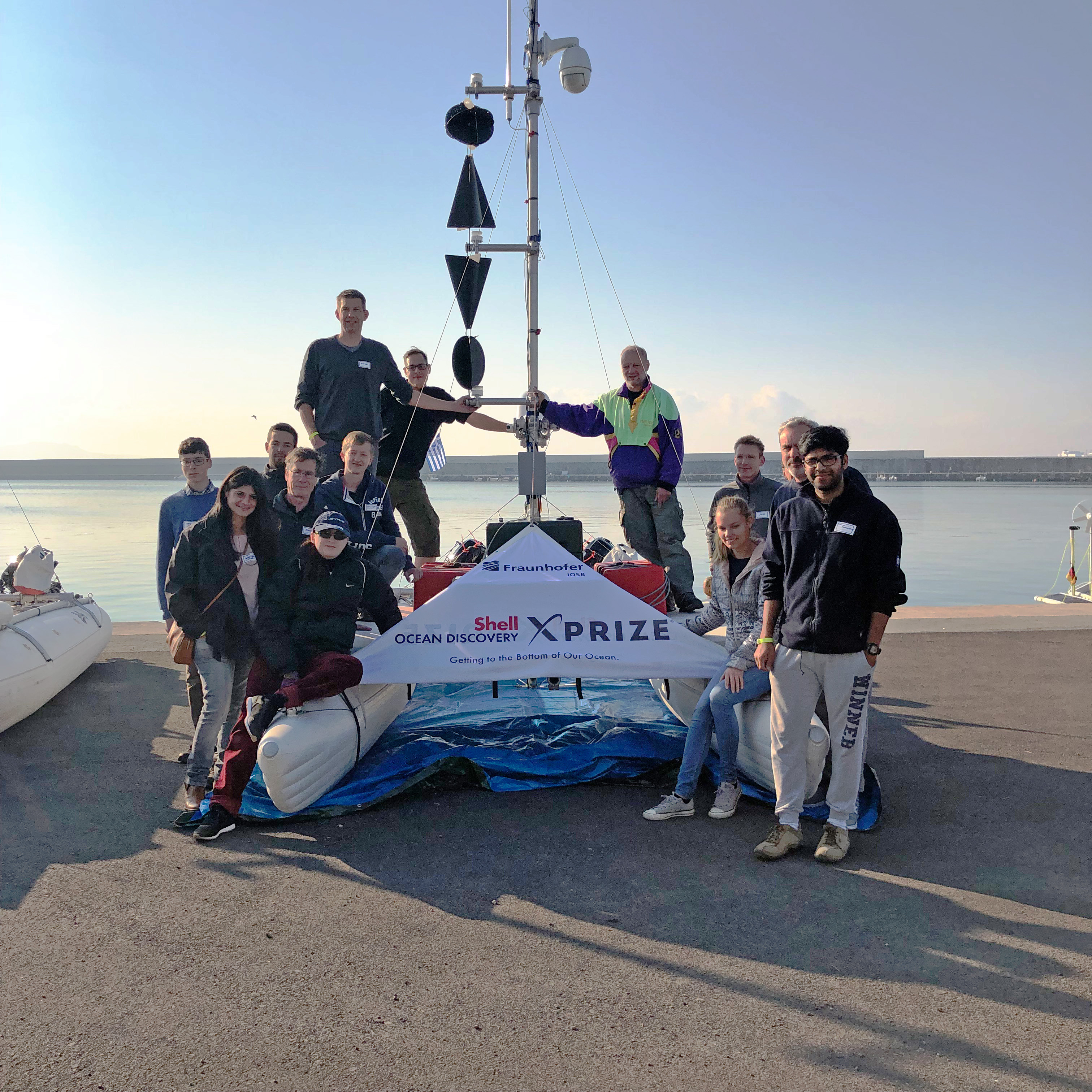Institute Director: "Important milestone for our work in the field of mobile autonomous systems in hostile environments"
Award ceremony XPRIZE
The Shell Ocean Discovery XPRIZE, which was launched in 2016 and is endowed with seven million dollars, has been decided. The only German team in the global technology competition for deep-sea mapping, the ARGGONAUTS of the Fraunhofer Institute for Optronics, Systems Engineering and Image Exploitation IOSB, has been placed among the top five of 32 participating teams. An exact ranking was announced by the XPRIZE Foundation at the award ceremony on May 31 in Monaco only for the winner and the runner-up.

"We are highly satisfied with our performance in the competition," explains Prof. Dr.-Ing. habil. Jürgen Beyerer, the head of the Fraunhofer IOSB. The institute has successfully proven its claim to leadership in the field of underwater robotics and has further developed its competencies: "Inspired by the truly challenging task of the Shell Ocean Discovery XPRIZE and fired by the motivating competitive environment, we have learned a great deal in a short time: We have tested new ideas, many things have worked, some not quite yet, and we have gained valuable insights for our future work".
Beyerer continued: "Our successful participation in the competition was an important milestone in the field of mobile autonomous systems in hostile environments, which is one of our main areas of focus. By the way, it always takes a bit of luck to beat the competitors in a close final.
Revolutionizing deep-sea research
To this day, the deep sea - i.e. the seas beyond a depth of 1000 meters - is largely unexplored and offers room for many exciting archaeological, geological and biological discoveries. The Shell Ocean Discovery XPRIZE, tendered by the renowned US XPRIZE Foundation, aims to revolutionize the exploration and mapping of the deep sea: Where large, manned, expensive research vessels are required today, the deployment of which can swallow up six-figure sums per day, comparatively lightweight and inexpensive autonomous systems will in future be able to do the work largely on their own. According to experts, the goal in the competition was ambitious: Within 24 hours, autonomous systems should be able to survey at least 250 square kilometers of the sea floor at depths of up to 4,000 meters with a resolution of five meters and, in addition to a three-dimensional map, provide photos of interesting objects. All the equipment needed for this had to fit into a standard sea container.
For this purpose, ARGGONAUTS relied on a swarm of unmanned surface vehicles based on inflatable catamarans, the "Water Strider". Each of them was towed by a 2.60-meter-long diving drone - nicknamed "Great Diver" - also developed by ARGGONAUTS, which then submerged independently at the location of operation, measured the sea floor from a distance of about 80 meters using a high-resolution sonar, returned to the Water Strider and was recaptured by the latter in a special fully automatic recovery maneuver.
Last modified:
 Fraunhofer Institute of Optronics, System Technologies and Image Exploitation IOSB
Fraunhofer Institute of Optronics, System Technologies and Image Exploitation IOSB